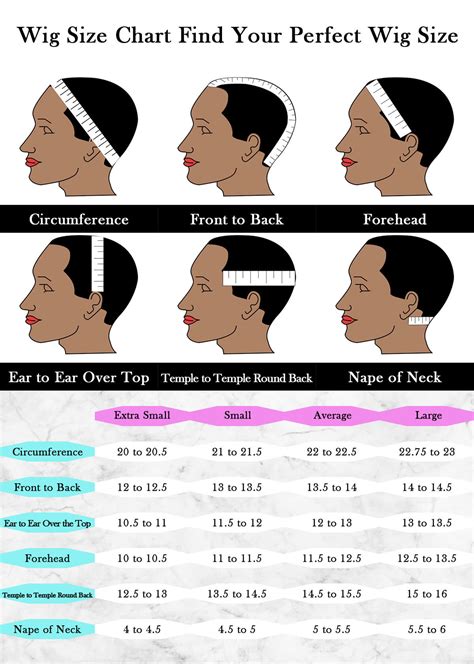Whether you’re experiencing hair loss, seeking a new style, or simply seeking a fashionable accessory, high-quality wigs offer a versatile solution. With the increasing demand for natural-looking and comfortable wigs, manufacturers have responded with innovative techniques and materials to cater to diverse needs. This comprehensive guide will navigate you through the essential considerations and step-by-step approach to selecting the perfect high-quality wig.

Why High-Quality Wigs Matter
-
Natural Aesthetics: High-quality wigs mimic the texture, color, and movement of natural hair, enhancing your appearance with a seamless and realistic finish.
-
Durability: Premium-grade wigs are crafted from durable materials, ensuring extended wearability and resilience against damage.
-
Comfort: Breathable caps and adjustable straps provide a secure and comfortable fit, allowing you to wear your wig for extended periods without discomfort.
-
Styling Versatility: High-quality wigs offer styling flexibility, allowing you to experiment with different colors, styles, and textures to match your personal preferences.
-
Confidence Booster: A well-chosen wig can instantly boost your confidence, empowering you to embrace your desired look or conceal hair-related issues.
Benefits of High-Quality Wigs
- Conceal hair loss: Wigs discreetly cover hair loss caused by medical conditions, alopecia, or thinning.
- Enhance style: Experiment with various hairstyles and colors to complement your wardrobe or special occasions.
- Protect natural hair: Wigs provide a barrier against environmental damage, styling products, and heat styling tools.
- Convenience: Save time and effort on styling and maintenance by simply wearing a wig instead.
- Fashion statement: Wigs add a touch of glamour and style to your outfit, elevating your appearance.
Step-by-Step Approach to Finding the Perfect Wig
-
Define Your Needs: Consider the reasons for wearing a wig and identify the desired style, color, and texture that complement your features.
-
Consult a Wig Specialist: Seek professional guidance from a wig specialist who can assess your scalp, hair density, and facial shape to recommend suitable wig options.
-
Try on Multiple Wigs: Visit a wig shop to try on various styles and colors to determine the most flattering fit and look.
-
Evaluate Materials: High-quality wigs are typically made from human hair, heat-resistant synthetic fibers, or a combination of both. Choose the material that best aligns with your budget, lifestyle, and desired aesthetics.
-
Consider Cap Construction: Wig caps come in various designs, including monofilament, lace front, and injected lace. Select a cap that provides a comfortable and secure fit on your scalp.
-
Match Color and Texture: Choose a wig that closely matches your natural hair color and texture to achieve a seamless blend. Consult a color chart or use hair swatches to find the closest match.
-
Finalize the Fit: Wig specialists can adjust the cap size and shape to customize the fit specifically for your head. Ensure a comfortable and secure hold without causing any discomfort.
-
Maintenance and Styling: Follow the manufacturer’s instructions for proper wig care, including washing, styling, and storage. High-quality wigs are designed to withstand regular use and maintenance.
Creative New Word: “Wigspiring”
“Wigspiring” refers to the inspirational power of high-quality wigs to transform your appearance, express your individuality, and embrace your confidence. Whether you’re rocking a wig for medical reasons, fashion, or sheer delight, let it inspire you to live life to the fullest.
Table 1: Types of Wig Materials
| Material | Pros | Cons |
|---|---|---|
| Human Hair | Most natural-looking, versatile styling | Expensive, requires extensive care |
| Heat-Resistant Synthetic Fibers | Affordable, low maintenance | Less natural-looking, limited styling options |
| Human Hair Blend | Compromise between natural appearance and durability | May require more styling effort than human hair |
Table 2: Wig Cap Constructions
| Cap Construction | Pros | Cons |
|---|---|---|
| Monofilament | Breathable, natural appearance | Delicate, may require special care |
| Lace Front | Seamless hairline, versatile styling | Can be more expensive, requires professional installation |
| Injected Lace | Breathable, durable, comfortable | May not be as versatile for styling |
Table 3: Wig Care and Maintenance
| Step | Instructions |
|---|---|
| Washing | Use a mild shampoo and conditioner specifically designed for wigs. Avoid rubbing or tangling. |
| Styling | Use heat protectant spray when using styling tools. Brush gently to avoid damage. |
| Storage | Store your wig on a wig stand or in a breathable bag when not in use. |
Table 4: Questions to Ask When Choosing a Wig
| Question | Rationale |
|---|---|
| What is the purpose of wearing the wig? | Determines the style and material requirements. |
| What is my hair type and scalp condition? | Helps the wig specialist recommend a suitable cap construction. |
| What is my desired aesthetic? | Guides the selection of color, texture, and length. |
| What is my budget for the wig? | Influences the material and construction options. |
| How often will I be wearing the wig? | Affects the durability and maintenance requirements. |
Conclusion
High-quality wigs have become an essential tool for individuals seeking natural-looking hair solutions, enhancing style, and boosting confidence. By following the step-by-step approach outlined in this guide, you can find the perfect wig to meet your specific needs and embrace your wigspiring journey. Remember, a well-chosen wig empowers you to express your individuality and live life on your own terms.
